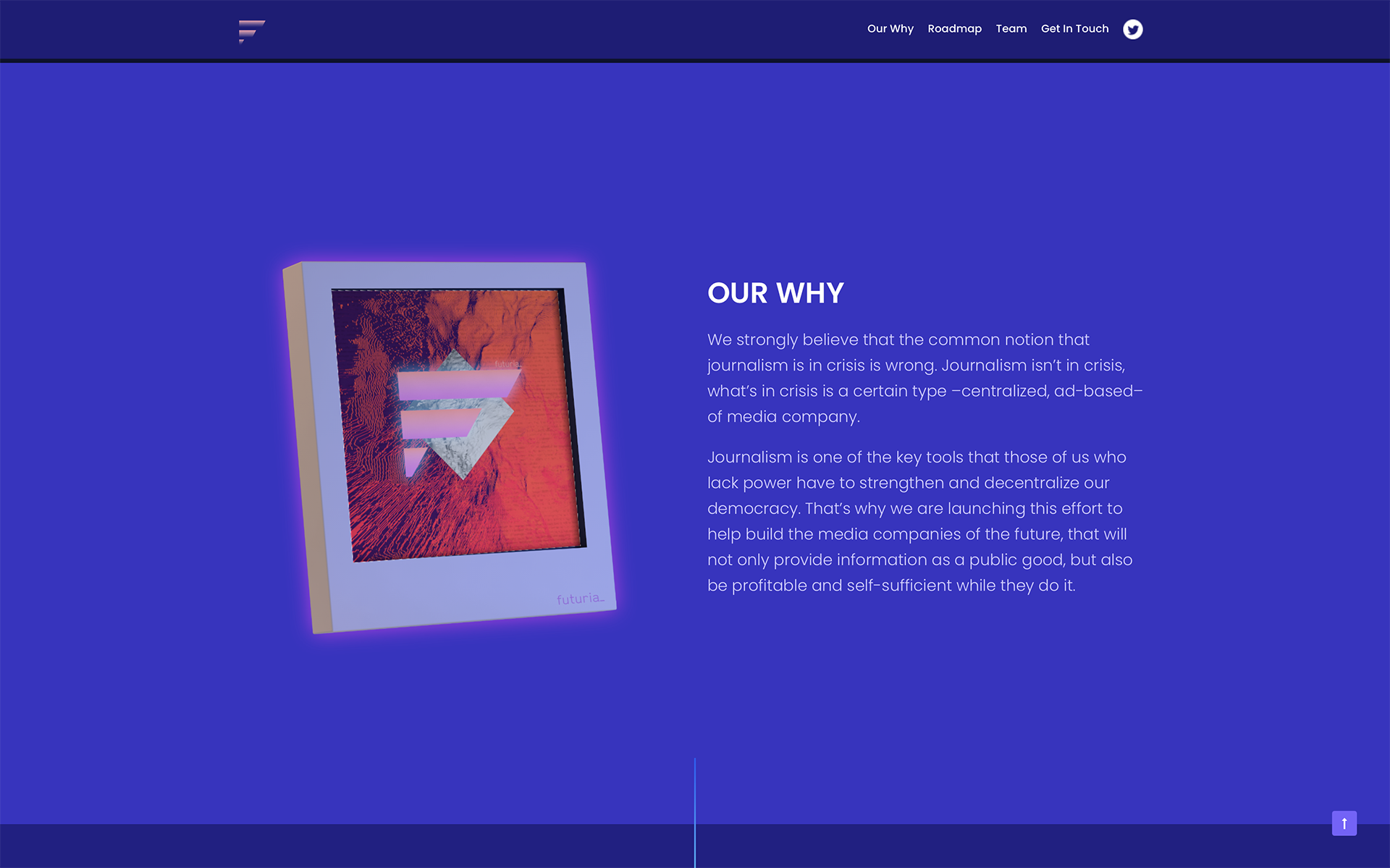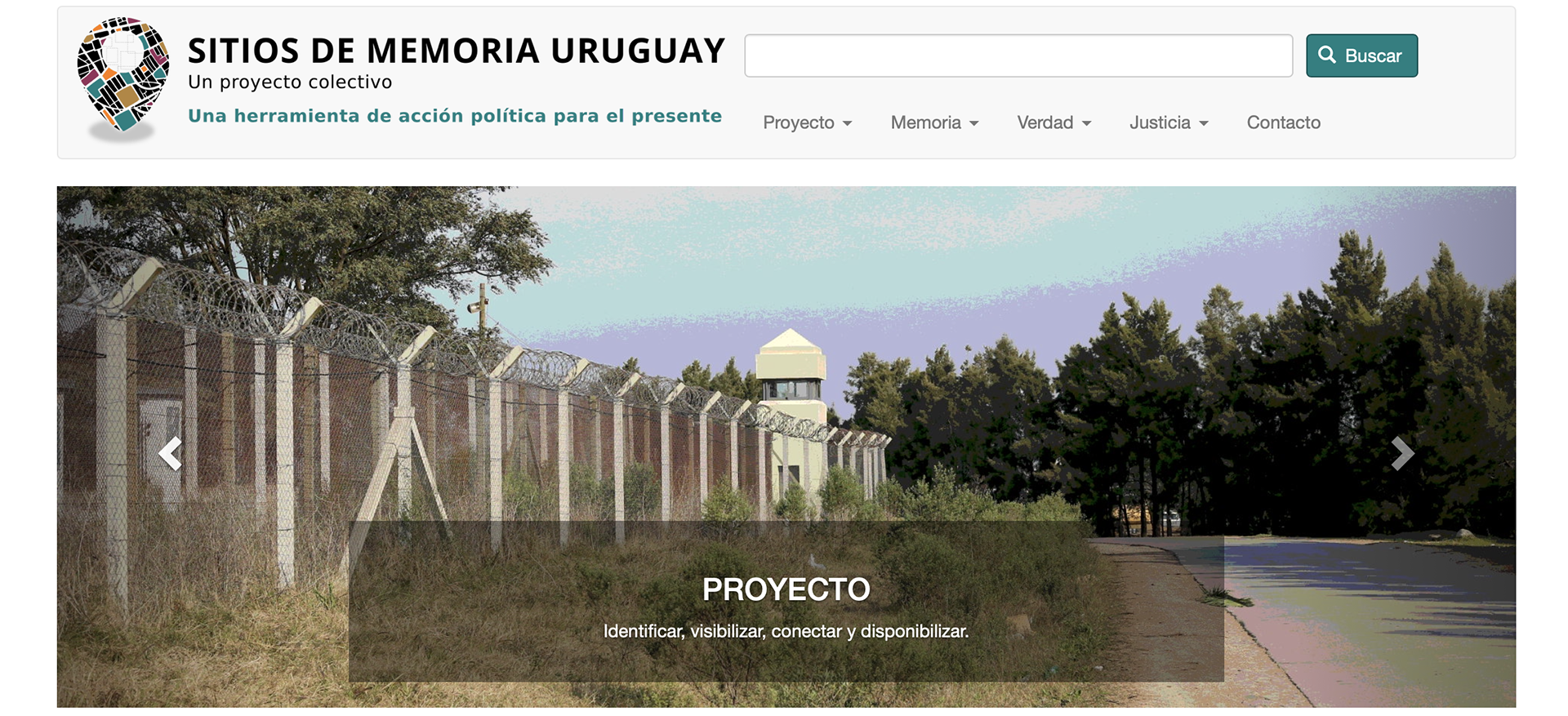Futuria is a Uruguayan media innovation laboratory that appears on the scene to try to solve problems that already exist. As a team they believe in the need to a more democratic and decentralized internet and they choose to try to build solutions on top of blockchains. They are not sure that this technology is the solution to all problems, but they are committed to exploring the possibilities generated by web3.
They had to start somewhere, so they chose to venture into the use of decentralized data storage in blockchains. What does it mean? That once the files are uploaded they cannot be downloaded or altered because, instead of being on the servers of a specific company, they are verified by all the nodes that are part of a chain of blocks.
With this technology, progress can be made in the fight against censorship, a real problem that some Latin American media are currently experiencing.
The first project is a collaboration with Memory Sites, a collective and website dedicated to collect and connect information from the previous authoritarian period and during the last Uruguayan dictatorship (from 1968 to 1973 and from 1973 to 1975 respectively).
Since 2021 the information has been digitized and uploaded to a web page; With Futuria, this information will be stored, in addition to on the web —through a centralized provider—, in block technology in a decentralized manner.
The beginning of endless opportunities
Futuria is a spin off of The Daily, a Uruguayan medium that works in a cooperative dynamic. “From the beginning we have been committed to developing open source technology that has made it possible to get where we are,” he told TechSmart its founder, Damián Osta.
In 2019 they received funding from the Google News Initiative to create Utopía, a technology that brings together the developments created by the medium and aims at allowing other organizations to use this open source technology, while at the same time improving it as a community.
“The smaller media outlets cannot run the technological race that needs to be run to survive separately. The idea is to create a media community that can use different tools, improve them and release the code,” said Osta.
Utopia advanced and received funding from la National Research and Innovation Agency (ANNI) to develop the second phase and in this framework is that a module is added that incorporates block chain technology: it is called Futuria and the bet is at the regional level.

Blockchain? Web3?
A blockchain is similar to a ledger, except that no one person controls it. Once it is programmed in a certain way to perform a certain function, all users are in equal conditions, none can modify it and that transaction is verified several times in different nodes, offering a decentralized and more secure system.
Cryptocurrencies, for example, are built on blockchains, but they are just one of the many opportunities this technology offers. It can also be used to store information, as in this first implementation of Futuria.
Web3 is, in a simplified way, the “new internet” built on blockchains and all the opportunities that this brings.
“We do not idealize block technology and we do not demonize it either. We believe that there is a web3 that is in the process of being created —and it is not necessarily going to be better than web2 (the one we know so far)—, but that it brings about a conversation in which the media with a democratizing vision have to be Osta stated.
“Web3 is much more than a bunch of mommy’s kids playing at being millionaires” he thinks and that is why he seeks, in addition to decentralizing financing, decentralizing storage, which is currently in a few companies.
With that idea in mind, the team started two ties: one with Protocol Labs and one with Sites of Memory. In addition, they have the support of the Solana Foundation (founders of Solana, the third most used block chain in the world).
Futuria and IPFS
In general, organizations or companies use a website to publish information that is hosted by a service offered, usually, by companies such as Google and Amazon. Hosting is a service offered by certain companies to store what is published on web pages on physical servers. However, this system has the disadvantage that the information remains somewhat vulnerable, since it is centralized in a physical location that, furthermore, does not belong to the company that owns the website.
Another option is to have your own servers. However, it is something very complex, expensive and beyond the reach of the vast majority of media. Therefore, hiring hosting services is the option used in most cases.
Futuria seeks to propose a new alternative and for that it works with the InterPlanetary File System (IPFS), a Protocol Labs project that seeks create a computer network that stores information in a decentralized manner, thus becoming increasingly resistant to censorship.
“Not only is it difficult for them to download it, but it is impossible because they would have to attack the hundreds of thousands of computers that are on the network around the world. In addition, one as the creator of a file, cannot download a file once it is uploaded, ”he told TechSmart Pedro Copelmayer, coordinator of Futuria.
“We want to use this technology in the media to ensure that journalistic content is always available and is not objectionable,” he explains.
Sites of Memory: a first implementation
Sites of Memory began in 2019 as a georeferencing project of places where prisoners detained for political reasons passed during the last Uruguayan dictatorship. Information was scattered across different types of documents, including hard-to-read academic sources.
“We started by creating a file with information on each of the places and then we added other types of data, such as the people who passed through those places and the politically motivated murders. Then we linked those people and the places they had passed through,” he told TechSmart Rodrigo Barbano, one of the coordinators of Sites of Memory.
As there was new content, it was linked to the rest. They added all the ongoing and closed cases of crimes against humanity, then the sentences and condemned repressors.
In 2021 they began to collect and digitize bulletins, flyers and posters produced by workers and political organizations in that context and that had been preserved to this day. When the possibility of also supporting them in a blockchain network arose, they did not hesitate to say yes.
“It seemed to us that ideologically it closes very well and in some way it is a way of continuing to collaborate with something that different people committed to historical memory have been collaborating with,” added Barbano.

In this first stage, the cards were not included, but 700 bulletins, flyers and posters; 1,250 press copies and 200 books compiled in one year and digitized in an A3 scanner. Until now, this documentation is stored on a server and on the collaborators’ computers; with Futuria it will be stored in a decentralized chain of blocks. According to Barbano, “sometimes one thinks that since the digital age arrived, things are not going to be lost, but in reality they end up being almost as ephemeral as ever.”
Sites of Memory is a voluntary project whose only expenses are the server and the domain. “We do not intend to have any income from any public body. We benefit from a certain independence that financing can sometimes condition,” said Barbano.
Until now the work is done in contact with different types of organizations that collaborate by lending documents. However, there are many more that may have information but, due to the low human capital of Sites of Memory, “it is impossible to go door to door.”
Although there are documentary collection projects on dictatorial periods, according to Barbano none have so much variety that they are linked to each other: in general they are databases with different information.
Project Members
Futuria is made up of 4 people: Damián Osta, founder of La Diaria; Pedro Copelmayer, economics columnist specializing in cryptocurrencies; María Catalina Colmenares, director of Latin America Programs at the Media Development Investment Fund and Evan Henshaw-Plath, founder of Twitter. As advisors are the Argentines Lisandro Acuña and Gonzalo Díaz de Vivar, creators of LectO, and Agustina Pérez Comenale, a lawyer specializing in technology.
:












